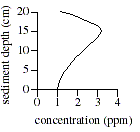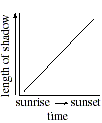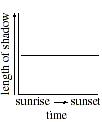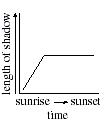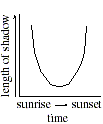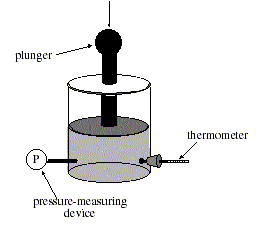1.The potential energy between electron and proton is U = . According to Bohr’s theory the energy in nth orbit of such a hypothetical atom will be proportional to
(a) n6 (b) n4
(c) n2 (d) n
2. The -particle is emitted by 226Ra have a kinetic energy 4.7845 MeV. The recoil kinetic energy of the daughter atom will be
(a) 0.045 MeV (b) 0.03 MeV
(c) 0.0862 MeV (d) 0.021 MeV
3. For a prism the refractive index is related to wavelength () as = A + B/2. The dispersive power is large if
(a) A is large (b) B is large
(c) is large (d) A and are large
4. An object is taken at two different positions, on principal axis of convex lens, the two images of equal height are found at positions v1 and v2 (v1 > v2). The focal length of convex lens will be
(a) (b)
(c) (d)
5. A tap of water at 10°C and another tap at 100°C. How much hot water must be taken so that we get 20 kg water at 35°C?
(a) 7.2 kg (b) 10 kg
(c) 14.4 kg (d) 5.6 kg
6. The power of a sound from the speaker of a radio is 20 mW. By turning the knob of the volume control, the power of the sound is increased to 400 mW. The power increase in decibels as compared to the original power is
(a) 13.0 dB (b) 10 dB
(c) 20 dB (d) 8000 dB
7. 45° F temperature difference convert into Celsius?
(a) 7.2°C (b) 25°C
(c) 40°C (d) 65°C
8. A reel of mass less thread rolls itself falling down under gravity. The acceleration of its fall is
(a) g (b) g/2
(c) 2g/3 (d) 4g/3
9. A slope of particle of a plane progressive wave is –1/5 times of velocity of particle which is the correct among the following
(a) Wave motion in +ve X-axis and velocity of wave is 5 unit
(b) Wave motion in –ve X-axis and velocity of wave is 5 unit
(c) Wave motion in +ve X-axis and velocity of wave is 1/5 unit
(d) Wave motion in –ve X-axis and velocity of wave is 1/5 unit
10. Large number of electric bulbs each of 100W-200V are connected in parallel with a supply of 240V and internal resistance 10, the total number of electric bulbs that can be glow with maximum intensity are
(a) 8 (b) 12
(c) 16 (d) 24
| 11. A circuit of primary cells and a resistor as shown in figure, the flow of current in resistor (R) is (a) 4A (b) 2 A (c) Zero (d) 0.5A |
| 12. Two infinite current carrying wires are arranged as shown in figure, the net magnetic field at point P is (a) 0.282 mT (b) 2.82 mT (c) 0.42 mT (d) 4.2 mT |
13. An object is projected at an angle its time of flight is 8 s. If acceleration due to gravity is 10 m/s² then its maximum height will be
(a) 20 m (b) 80 m
(c) 320 m (d) can never be calculated
14. Cp and Cv are molar specific heats at constant pressure and volume respectively, for 8 gm oxygen Cp – Cv will be (R is gas constant)
(a) 4 R (b) 2 R
(c) R/2 (d) R
| 15. A displacement-time graph of plane progressive wave as shown in figure if amplitude of wave is a what is the phase difference between particles A and B is (a) /3 (b) /2 (c) 2/3 (d) |
Chemistry
16. Assuming that air is 79% by mole of N2, 20 mole % O2 and 1% Ar, the density of air at 25°C and 1 atm is (Atomic mass of Ar = 39.9)
(a) 1.18 g/lit (b) 1.08 g/lit
(c) 1.28 g/lit (d) 1.0 g/lit
17. The E° of a cell in which the reaction + 14H+ + 6e– 2Cr3+ + 7H2O occurs is 1.33 volt at 25°C. The logarithm of equilibrium constant for the reaction is approximately
(a) 34.9 (b) 134.9
(c) 234.9 (d) 14.9
18. A solution of optically active 1-phenylethanol in acidified aqueous medium recemizes due to
(a) enolisation (b) carbonium ion formation
(c) alkene formation (d) reversible oxidation-reduction
19. The standard enthalpy change for the neutralization of hydrocyanic acid and NaOH is = – 2460 cal. Given that the standard enthalpy change for the neutralization of HCl and NaOH = – 13,360 cal. What is the heat of ionization of HCN.
(a) –15,820 cals. (b) +10,900 cals.
(c) –10,900 cals. (d) +15,820 cals.
20. Titanium crystallizes in a face centred cubic lattice. It reacts with carbon or hydrogen interstitially by allowing atoms of these elements to occupy holes in the host lattice. Hydrogen occupies tetrahedral holes but carbon occupies octahedral holes. The formula of titanium carbide and hybride are
(a) TiC2, TiH4 (b) TiC, TiH2
(c) Ti3C, TiH2 (d) TiC2, TiH
(a) PhCH2OH (b) PhCH2CH2OH
22. When one gram mole of KmnO4 reacts with HCl, the volume of chlorine liberated at NTP will be
(a) 11.2 litres (b) 22.4 litres
(c) 44.8 litres (d) 56.0 litres
23. The reactivity of the compounds (I) MeBr (II) PhCH2Br (III) MeCl and (IV) p-MeOC6H4CH2Br decreases as
(a) I > II > III > IV (b) II > I > III >IV
(c) IV > II > I > III (d) IV > III > I > II
24. When a standard hydrogen electrode is coupled with a hydrogen electrode as shown as Pt|H2(1atm)|H+(acid)|| H+(1M) | H2(1atm)| Pt
The emf of the cell will be maximum when the acid taken in anode compartment is
(a) 0.1 M HCl (b) 0.1 M H2SO4
(c) 0.1 M CH3CO2H (d) 0.1 M HCO2H
25. Conversion of methyl cyclopentene to trans-2-methyl-1-cyclopentanol can be conveniently achieved by
(a) NaOH – H2O (b) Hydroboration-oxidation
(c) Hydroboration-hydrolysis (d) Oxymercuration-demercuration
26. In gaseous reactions important for the understanding of the upper atmosphere, H2O and O react bimolecularly to form two OH radicals. H for this reaction is 72 kJ at 500 K and Ea is 77 kJ mol–1, then Ea for the bimolecular recombination of two OH radicals to form H2O and O is
(a) 3 kJ mol–1 (b) 4 kJ mol–1
(c) 5 kJ mol–1 (d) 7 kJ mol–1
27. 0.5 g of fuming H2SO4 is diluted with H2O. This solution is completely neutralized by 26.7 ml of 0.4 N NaOH. The percentage of free SO3 in the sample is
(a) 30.6% (b) 40.6%
(c) 20.9% (d) 50%
28. With very strong bases, such as amide ion, , unactivated aryl halides undergo substitution by an elimination-addition or benzyne mechanism. Which of the following statements given below does not support the benzyne mechanism?
(a) 2, 6-Dimethyl chlorobenzene, does not react by this mechanism.
(b) o-Bromoanisole reacts with NaNH2/NH3 to form o-anisidine.
(c) o-Bromoanisole reacts with NaNH2/NH3 to form m-anisidine.
(d) 2, 6-Dideuterobromobenzene reacts more slowly than bromobenzene.
29. A balloon filled with Hydrogen at 0.1 atm is prickled with a sharp pointed needle and quickly placed in a tank full of acetylene at atmospheric pressure. After a while the balloon would have
(a) Shrunk (b) Enlarged
(c) Completely collapsed (d) Remain unchanged in size
30. Chlorobenzene is allowed to undergo nitration, sulphonation, chlorination and bromination under appropriate conditions separately. What will be the order of increasing ortho product
(a) Sulphonation < bromination < nitration < chlorination
(b) Sulphonation < nitration < bromination < chlorination
(c) Sulphonation < bromination < chlorination < nitration
(d) Bromination < sulphonation < chlorination < nitration
Botany
31. Under favourable conditions of binary fission, a bacterial cell divides into two after every 20 minutes. How many approximate bacterial cells may survive after 2 hours?
(a) 64 (b) 6
(c) 8 (d) 63
32. Which of the following is a true moss?
(a) Wolf moss (b) Florida moss
(c) Spanish moss (d) None of these
33. In which of the following lysosome occurs?
(a) Aspergillus (b) Penicillium
(c) Neurospora (d) All of these
34. Which of the following phytohormones brings about the negative gravitropism of roots and the positive gravitropism in stem?
(a) GA (b) ABA
(c) IAA (d) None
35. The difference between the redox potentials of Cytochrome b6 and cytochrome f in
Z-scheme amounts to
Z-scheme amounts to
(a) 0.03 v (b) 0.36
(c) 0.33 (d) 0.23
36. Which of the following insectivorous plants is called Cobra lily?
(a) Heliamphora (b) Darlingtonia
(c) Genlisea (d) Cephalotus
37. The phyllotaxy found in guava is
(a) Alternate (b) Opposite superposed
(c) Opposite decussate (d) Both (b) and (c)
38. Tissue between xylem and phloem strands in monocot stem is
(a) Intrafascicular cambium (b) Interfascicular cambium
(c) Conjunctive tissue (d) None
39. The type of fruit found in jack fruit and monkey fruit is
(a) Sorosis (b) Syconus
(c) Sorosis and suyconus, respectively (d) Syconus and sorosis, respectively
40. CAZRI is situated at
(a) Nagpur (b) Jodhpur
(c) Palampur (d) Bilaspur
41. During radioactive pollution oysters deposite
(a) 65Zn (b) 55Fe
(c) 90Sr (d) All of these
42. In which of the following layers of the atmosphere, temperature decreases with height?
(a) Stratosphere (b) Mesosphere
(c) Thermosphere (d) All of these
43. Incomplete dominance, codominance and multiple alleles are which type of gene interaction?
(a) Intragenic interaction (b) Intergenic interaction
(c) Interallelic interaction (d) Both (a) and (c)
44. Repititive DNA is not met with in
(a) Yeast (b) Prokaryotes
(c) Both (a) and (b) (d) Eukaryotes
45. Which of the following is not an obligate parasite?
(a) Viroid (b) Prion
(c) Both (a) and (b) (d) None of these
Zoology
46. The presence of specific immunoglobulin response to antigen in the animal kingdom is thought to be limited to ………..
(a) Non-chordates (b) Mammals
(c) Vertebrates (d) Birds and mammals
47. Spiral valve of Heister is present in
(a) cystic duct (b) Hepto-pancreatic duct
(c) Pancreatic duct (d) Bile duct
48. Peacetime deaths concern to
(a) Effect of poison on stomach
(b) Food poisoning
(c) Gaseous poisoning
(d) Snake venom cause agglutination of R.B.Cs
49. Hypokinetic Hypoxia concerned to
(a) Reduced blood flow rate (b) Low O2– content in blood
(c) Low O2 in artery (d) Low oxygen content in venous blood
50. In which stage of developmental form of fasciola showing polyembrony?
(a) Sporocyst (b) Metacercaria
(c) Redia (d) Both (a) and (c)
51. Mystagmus is sex linked disease
(a) Long hairy growth on the pinna (b) Involuntary oscillation of eye ball
(c) Abnormality of the mitral valve (d) Degenaration of optic nerve
52. Howship lacunae occurs in
(a) Spleen (b) Liver
(c) Bone (d) Cartilage
53. Sugar in the urine of pregnant lady may indicate
(a) Lactosuria (b) Benign renal glycosuria
(c) Diabetes mellitus (d) All of these
54. Vaginal bleeding in a new born female infant is due to
(a) Trauma (b) Infection
(c) Haemorrhagic disease (d) Estrogen withdrawal
55. The vitamins that help to counteract the deleterious effects of corticosteroids on wound healing is
(a) Vitamin A (b) Vitamin B2
(c) Vitamin C (d) Vitamin E
56. Regarding C.S.F. all are true except
(a) It is an ultrafiltrate of plasma
(b) It provides a greater part of the nutritional requirement
(c) It is important in protecting the brain from injury when the head is struck.
- It has pressure 110-130 mm H2O
57. The philedelphia chromosome is usually related to person suffering from
(a) Chronic lymphatic leukemia (b) Acute lymphatic leukemia
(c) Chronic myelocytic leukemia (d) Osteosarcoma
58. Which of the following observation about saliva is incorrect
(a) Its enzyme ptylin is concerned in the digestion of disaccharides
(b) By its solvent action on the food stuffs at anables testing to take place
(c) It facilitates, speech moistens the food and lubricates the process of swallowing
(d) It is secreted in response to the sight, taste and smell of food and also to the act of chewing
59. The characteristics of normal menstrual discharge are the following except
(a) It consists of dark altered blood mixed with mucus secretions
(b) It does not clot and contains and no prothembin though it is rich in calcium
(c) It contains leucocytes cell debris and necrotic tissue
(d) Its fibrinogen content is very high
60. Which statement is wrong about trends of human evolution?
(a) Erect posture by the development of lumber crest
(b) Development of articulated speech
(c) Opposability of thumb and loss of opposability of great toe in hind limb
- Shortening of iliac bone.
Answers
| 1. | (a) | 2. | (c) | 3. | (b) | 4. | (b) | 5. | (d) |
| 6. | (a) | 7. | (b) | 8. | (c) | 9. | (a) | 10. | (a) |
| 11. | (b) | 12. | (a) | 13. | (b) | 14. | (a) | 15. | (c) |
| 16. | (a) | 17. | (b) | 18. | (b) | 19. | (b) | 20. | (b) |
| 21. | (d) | 22. | (d) | 23. | (c) | 24. | (c) | 25. | (b) |
| 26. | (c) | 27. | (c) | 28. | (b) | 29. | (b) | 30. | (a) |
| 31 | (b) | 32 | (d) | 33 | (c) | 24 | (d) | 35 | (c) |
| 36 | (b) | 37 | (d) | 38 | (d) | 39 | (c) | 40 | (b) |
| 41 | (a) | 42 | (b) | 43 | (d) | 44 | (c) | 45 | (d) |
| 46. | (c) | 47. | (a) | 48. | (c) | 49. | (a) | 50. | (d) |
| 51. | (b) | 52. | (c) | 53. | (d) | 54. | (d) | 55. | (a) |
| 56. | (b) | 57. | (c) | 58. | (a) | 59. | (d) | 60. | (d) |

